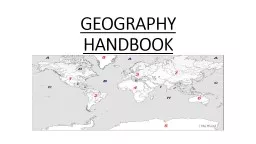PPT-Ii m.sc. Applied geography
Author : adia | Published Date : 2023-06-24
title population and settlement geography date 31 082020 topic size and spacing of rural settlements Presented by s Maheswari Guest lecturer in geography Gcwak
Presentation Embed Code
Download Presentation
Download Presentation The PPT/PDF document "Ii m.sc. Applied geography" is the property of its rightful owner. Permission is granted to download and print the materials on this website for personal, non-commercial use only, and to display it on your personal computer provided you do not modify the materials and that you retain all copyright notices contained in the materials. By downloading content from our website, you accept the terms of this agreement.
Ii m.sc. Applied geography: Transcript
Download Rules Of Document
"Ii m.sc. Applied geography"The content belongs to its owner. You may download and print it for personal use, without modification, and keep all copyright notices. By downloading, you agree to these terms.
Related Documents









![Geography Antarctica The Journey to the South Pole [Date]](https://thumbs.docslides.com/637294/geography-antarctica-the-journey-to-the-south-pole-date.jpg)




